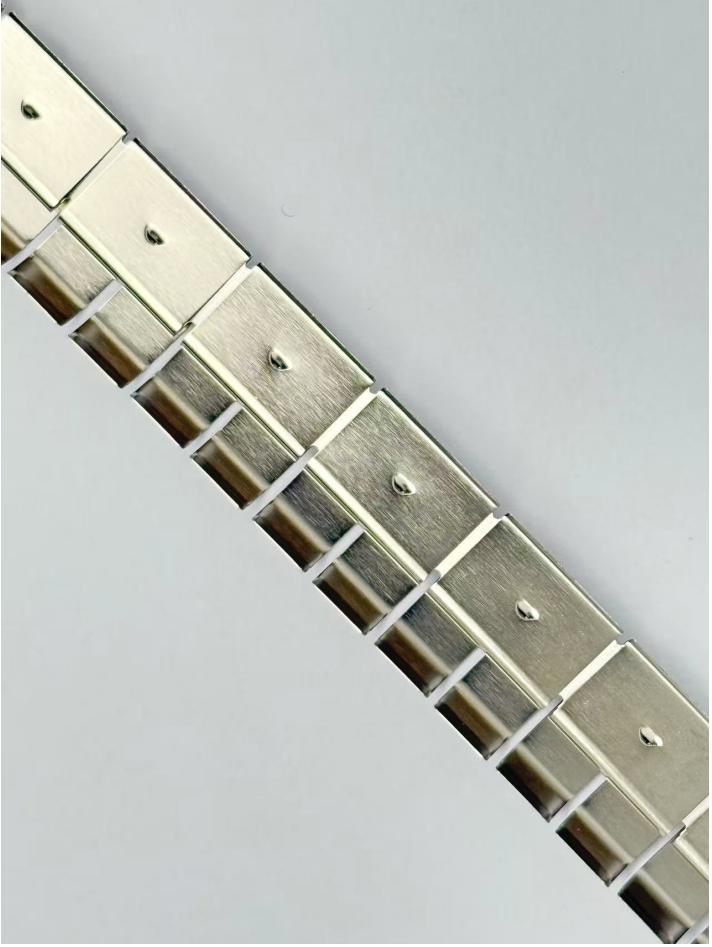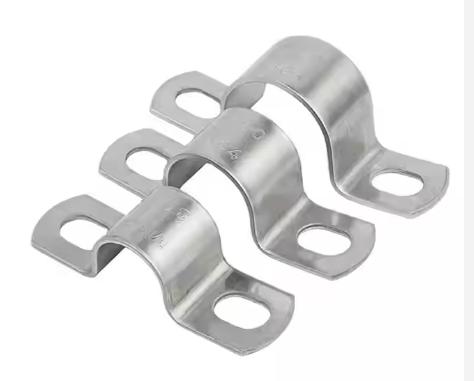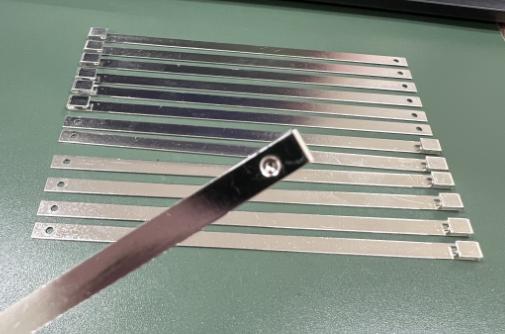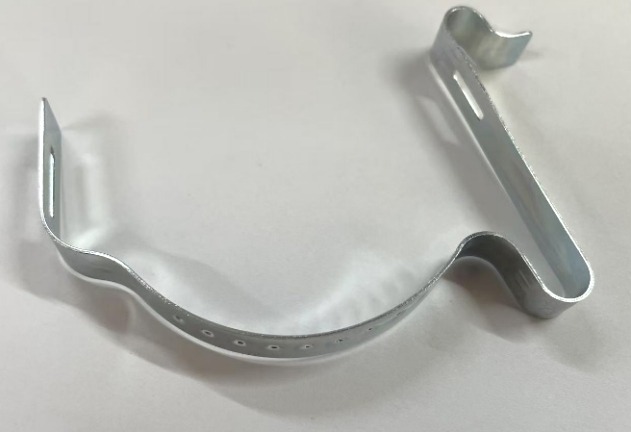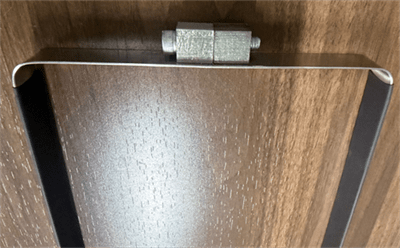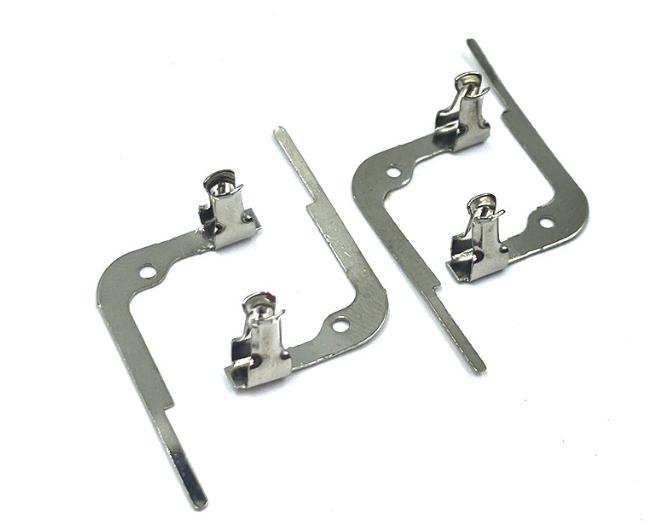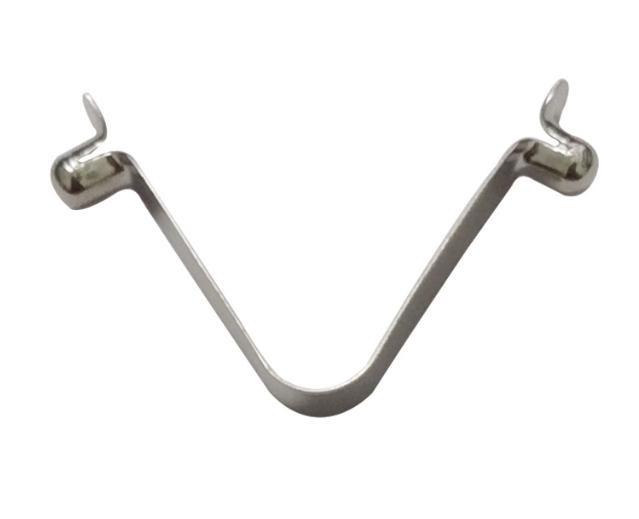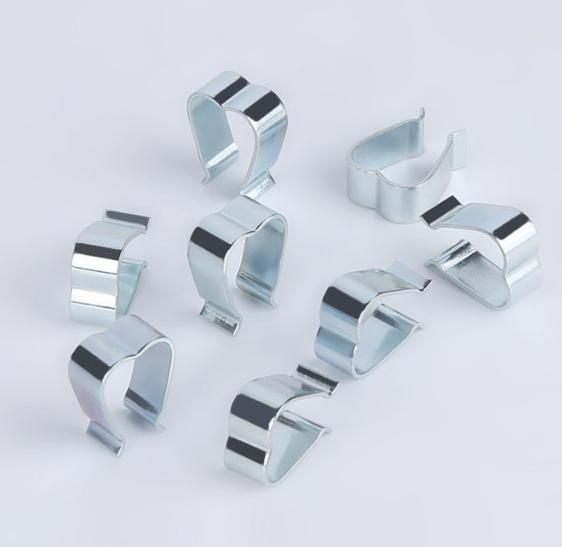Inside the World of Stamping Die Materials: The Unsung Heroes of Manufacturing
In the bustling workshop of industry, where metal dances under the hammer’s kiss and intricate shapes emerge from sheets of steel, the unsung hero is often the die itself. This sculpted instrument, a testament to human ingenuity and material prowess, holds the power to transform mundane metal into intricate components that drive our world. But the die’s magic lies not just in its design, but in the very fabric of its being – its material. Choosing the right material for a stamping die is an art, alchemy of properties and needs, where understanding the nuances of each element can make the difference between a masterpiece and a misshapen failure.
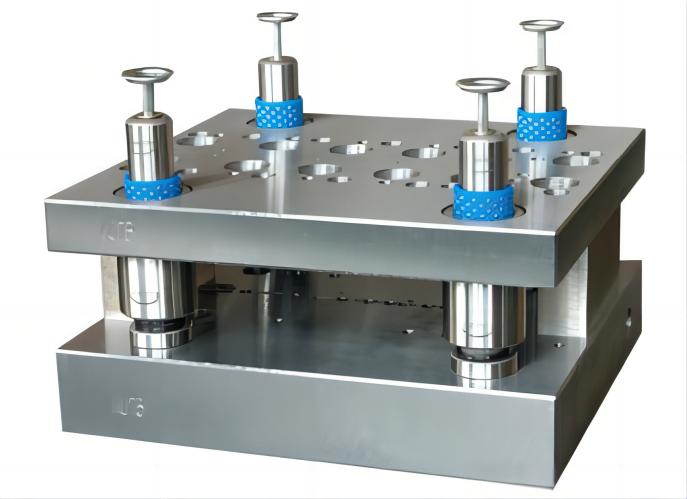
Basic Classification of Stamping Die Materials
1. High Carbon Medium Chromium Tool Steel
High carbon medium chromium tool steels play a significant role in the world of stamping dies. Popular examples include Cr4W2MoV, Cr6WV, and Cr5MoV. Their moderate chromium content offers several advantages:
- Reduced eutectic carbides: These carbides can lead to brittleness in high-chromium steels. Lower levels offer improved toughness and resilience.
- Uniform carbide distribution: This fosters consistent performance and predictable wear patterns, resulting in longer die life.
- Minimal heat treatment deformation: Precise dimensions are crucial for accurate stamping. This steel maintains its shape beautifully through the heat treatment process.
- Enhanced performance compared to high-carbon high-chromium steels: This makes it a versatile choice for a wider range of stamping applications.
Overall, high carbon medium chromium tool steels offer a compelling balance of strength, wear resistance, and dimensional stability, making them a reliable choice for various stamping needs.
2. Carbon Tool Steel
Carbon tool steels like T8A and T10A enjoy widespread popularity in stamping dies due to their several strengths:
- Excellent processing performance: They are easy to machine and shape, reducing production time and costs.
- Cost-effectiveness: Compared to other tool steel options, carbon steels are generally more affordable, making them attractive for budget-conscious projects.
However, it’s important to acknowledge their limitations:
- Limited hardenability: Compared to other tool steel types, they don’t achieve the same level of hardness, which can limit their wear resistance and durability in demanding applications.
- Low red hardness: Their hardness diminishes at elevated temperatures, making them less suitable for hot-working applications.
- Significant heat treatment deformation: They can warp or distort during heat treatment, requiring careful process control and potentially impacting dimensional accuracy.
- Lower load-bearing capacity: They may not withstand heavy loads or high-impact environments as effectively as other tool steel options.
Therefore, while carbon tool steels offer advantages in processing and cost, their limitations should be carefully considered when selecting the right material for a specific stamping application. For demanding tasks requiring high strength, wear resistance, and dimensional accuracy, other tool steel types might be more appropriate.
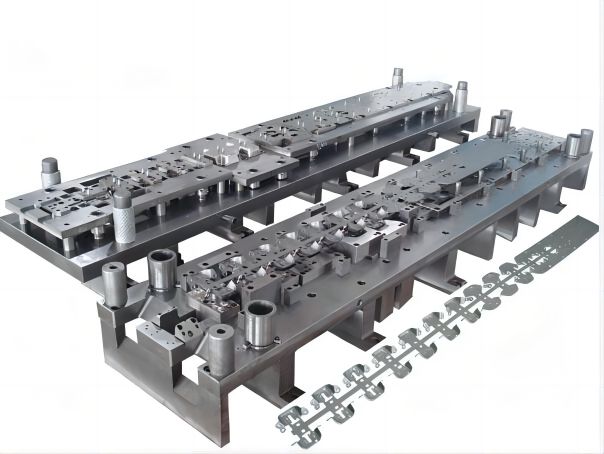
3. High Carbon High Chromium Tool Steel
High carbon high chromium steels like Cr12, Cr12MoV, and Cr12Mo1V1 (D2) are renowned for their impressive qualities:
- Outstanding hardenability and hardness: These steels achieve exceptional hardness after heat treatment, leading to superior wear resistance in demanding applications.
- Minimal heat treatment deformation: Unlike some other steels, they maintain their shape remarkably well during heat treatment, ensuring dimensional accuracy in finished molds.
However, these steels also present a unique challenge:
- Severe carbide segregation: The carbon and chromium tend to cluster unevenly within the microstructure, potentially impacting performance and consistency. To address this, repeated forging processes are often necessary to homogenize the microstructure and optimize the steel’s properties.
Despite this challenge, high carbon high chromium steels remain a popular choice for various molds due to their exceptional strength and wear resistance. However, careful consideration of the required forging processes and their potential cost implications is crucial when selecting this material for specific applications.
4. Hard Alloy and Steel-Bonded Hard Alloy
When it comes to stamping die materials, hard alloys reign supreme in terms of hardness and wear resistance. Their carbide-rich composition allows them to tackle even the most abrasive materials with unwavering resolve. However, their Achilles’ heel lies in their relatively lower bending strength and toughness, making them more susceptible to breakage under intense force or impact.
This is where steel-bonded hard alloys enter the scene, offering a compelling solution. By incorporating a steel backing to the hard alloy core, they bridge the gap between exceptional hardness and improved structural integrity. This hybrid approach mitigates the brittleness concerns of pure hard alloys and opens doors for wider application possibilities.
The key lies in the synergy between the two materials:
- Hard alloy hardness and wear resistance: The carbide-rich core ensures the ability to withstand even the most challenging wear scenarios.
- Steel backing for strength and toughness: The steel base provides the necessary support and resilience, making the material less prone to fracture under demanding conditions.
While steel-bonded hard alloys may not match the pure hardness of their unbonded counterparts, they offer a valuable trade-off of enhanced overall performance and versatility. This makes them a crucial player in the world of stamping die materials, particularly for applications demanding both exceptional wear resistance and robust structural integrity.
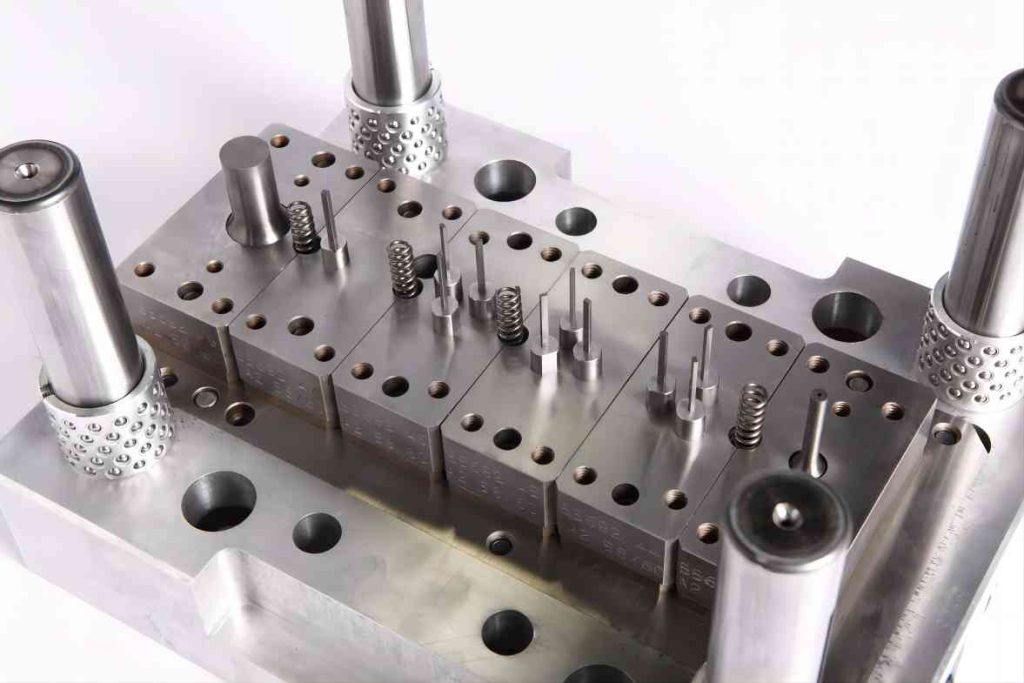
5. High-Speed Steel
High-speed steels are a mainstay in the world of stamping die materials, renowned for their exceptional combination of several key properties:
- High hardness and wear resistance: These steels retain their sharp edges and resist abrasive wear even in demanding applications, ensuring long-lasting die performance.
- Compressive strength: Their ability to withstand high loads without deformation makes them suitable for applications involving heavy-duty stamping and forming operations.
- Versatility: With various grades available, high-speed steels can be tailored to specific needs. Popular examples include W18Cr4V, W6Mo5Cr4V2 (M2), and 6W6Mo5Cr4V (low carbon M2).
One key advantage of high-speed steels is their superior load-bearing capacity, allowing them to handle the pressures of complex and high-volume stamping operations. This makes them a reliable choice for a broad range of applications, from intricate automotive parts to large-scale industrial components.
However, it’s important to note that high-speed steels may not be the most cost-effective option for every situation. Their relative complexity in processing can impact their affordability. Additionally, their brittleness requires careful handling and consideration for applications involving high impact forces.
6. Matrix Steel
Matrix steels are a specific category of tool steels derived from high-speed steels but with additional alloying elements. This modification yields several significant advantages:
- Enhanced toughness and fatigue strength: Compared to their high-speed steel counterparts, matrix steels exhibit improved resilience against sudden impacts and repeated stresses, making them less prone to cracking or chipping.
- High wear resistance: Like high-speed steels, they excel at resisting abrasive wear, ensuring long-lasting performance in demanding stamping applications.
- Cost-effectiveness: The specific alloying elements and processing techniques employed in matrix steels can offer a more budget-friendly alternative to traditional high-speed steels while maintaining respectable performance levels.
Examples of popular matrix steels include 6Cr4W3Mo2VNb, 7Cr7Mo2V2Si, and 5Cr4Mo3SiMnVAL. Each grade boasts a unique combination of properties, catering to specific needs within the stamping world.
It’s important to note that while matrix steels offer a compelling blend of performance and affordability, they may not always match the absolute peak performance of high-speed steels in terms of hardness or ultimate wear resistance. However, for applications where a balance of strength, toughness, and cost is crucial, matrix steels can be a highly effective and versatile choice.
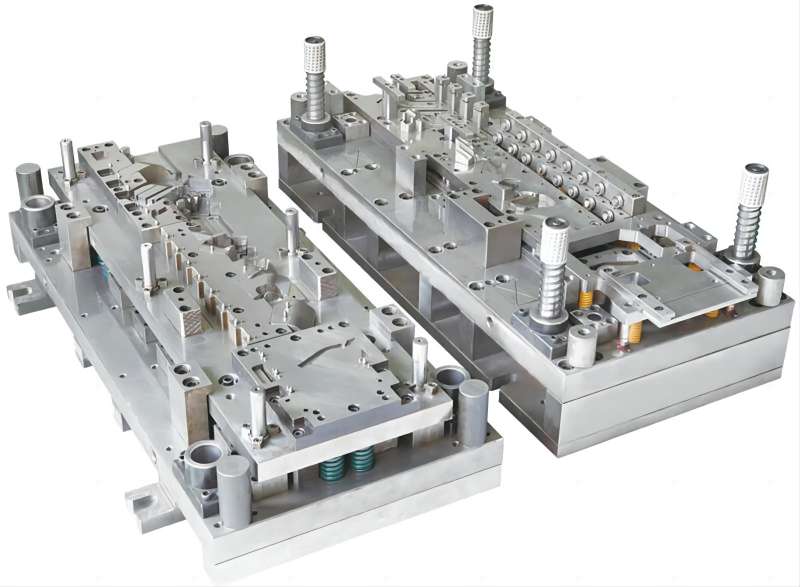
7. New Materials
The world of stamping die materials is constantly evolving, with innovative alloys emerging to meet the ever-changing demands of the market. These new materials, specifically designed for cold mold applications, prioritize a critical trifecta: strength, toughness, and wear resistance. This allows them to tackle even the most challenging tasks with exceptional durability and precision.
Two distinct branches have emerged within this category, each catering to specific needs:
- Enhanced toughness: This branch focuses on improving the material’s resilience against impacts and sudden stresses. Examples like 8CrMo2V2Si and DC53 offer outstanding resistance to cracking and chipping, making them ideal for applications where repeated shocks or high-impact forces are present.
- Increased wear resistance: This branch prioritizes maximizing the material’s ability to withstand abrasive wear and tear. Alloys like 320CrVMo13 excel in high-volume, high-pressure environments, ensuring long-lasting performance and minimizing downtime.
8. Low Alloy Tool Steel
Low alloy tool steels occupy a unique space within the stamping die material spectrum, building upon the basic characteristics of carbon and carbon tool steels while incorporating select alloying elements. This strategic addition offers several advantages:
- Reduced quenching tendencies: Compared to their carbon-based counterparts, low alloy steels exhibit less distortion during heat treatment, leading to improved dimensional stability and predictable results.
- Enhanced wear resistance: The carefully chosen alloying elements bolster their ability to withstand abrasive wear and tear, extending the lifespan of the die and minimizing downtime.
- Balanced performance: Low alloy steels strike a valuable balance between cost-effectiveness and performance, offering a viable alternative to both carbon steels and their high-alloy counterparts.
Examples of popular low alloy tool steels include CrWMn, 9Mn2V, 7CrSiMnMoV (CH-1), and 6CrNiSiMnMoV (GD). Each grade boasts a specific combination of properties tailored to address distinct needs within the stamping world.
However, it’s important to note that while these steels offer a compelling blend of benefits, they may not always match the peak performance levels of either high-carbon or high-alloy steels in terms of absolute hardness or wear resistance. Nevertheless, for applications where a balanced combination of affordability, stability, and wear resistance is crucial, low alloy tool steels can be a highly effective and versatile choice.
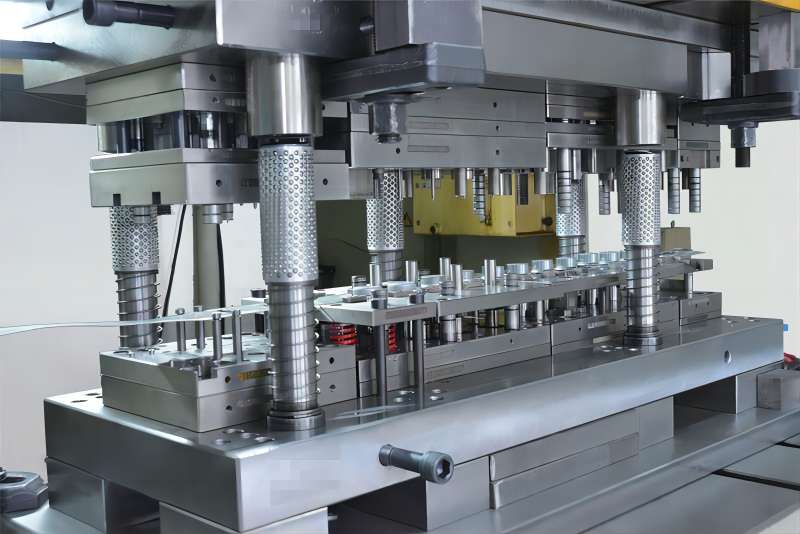
Conclusion
In conclusion, choosing the right stamping die material is a complex decision that hinges on various factors. Factors such as the intended application, budget constraints, and desired characteristics of the finished product play pivotal roles in this decision-making process. Each material class comes with its own set of advantages and disadvantages, influencing its suitability for specific applications.
To ensure the success of metal forming processes, manufacturers must carefully weigh these factors and select a stamping die material that aligns with their project requirements. In doing so, they can maximize efficiency, reduce costs, and ultimately contribute to the seamless and precise production of stamped metal components. The dynamic landscape of stamping die materials continues to evolve, promising continuous innovation and improvement in the quest for optimal performance and durability.

